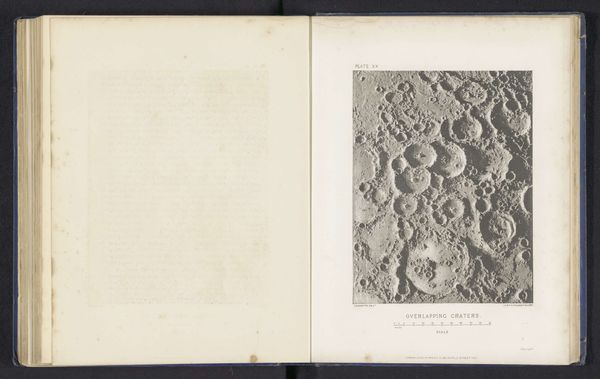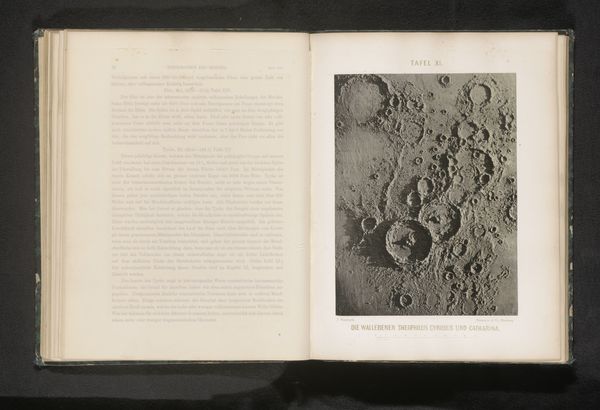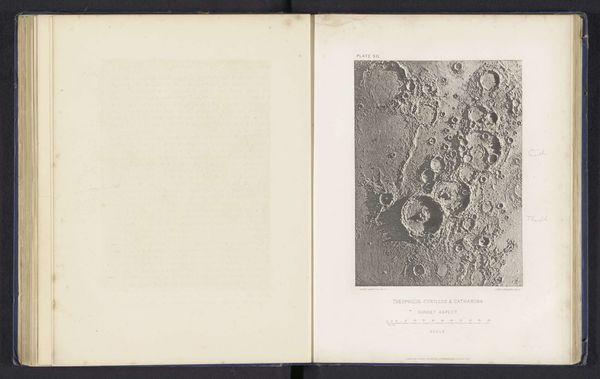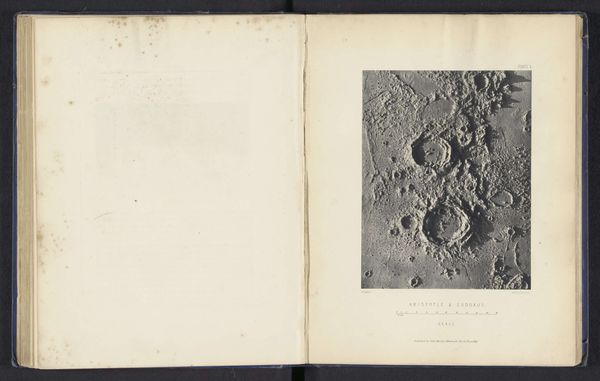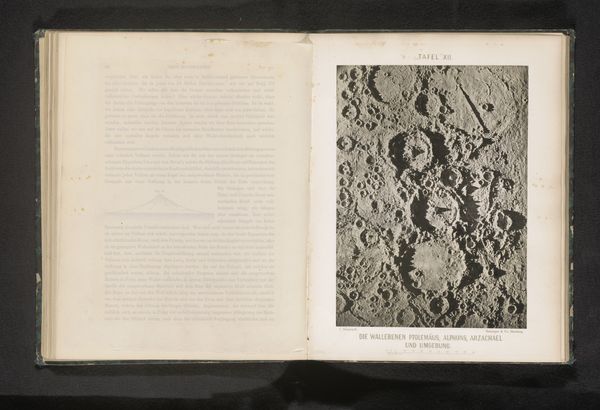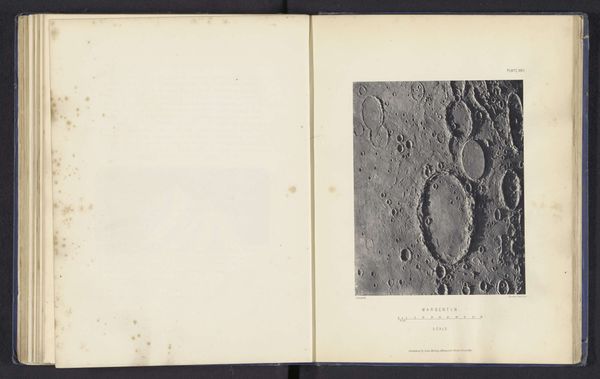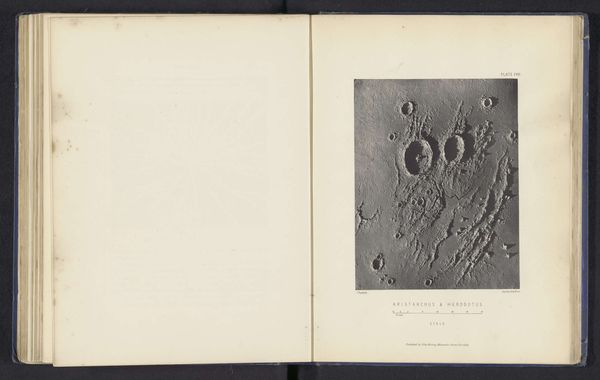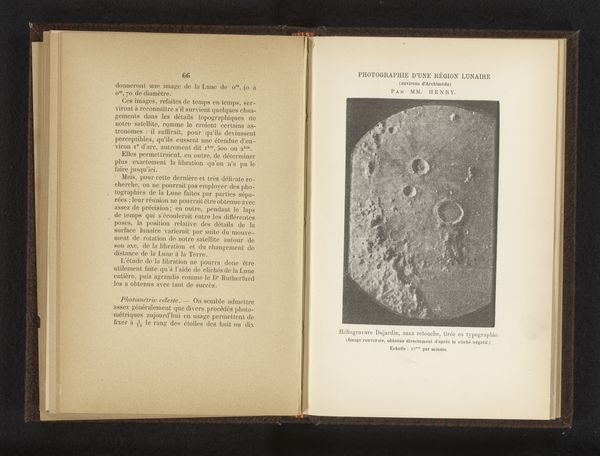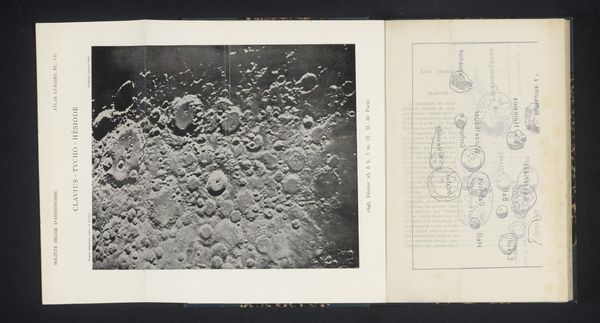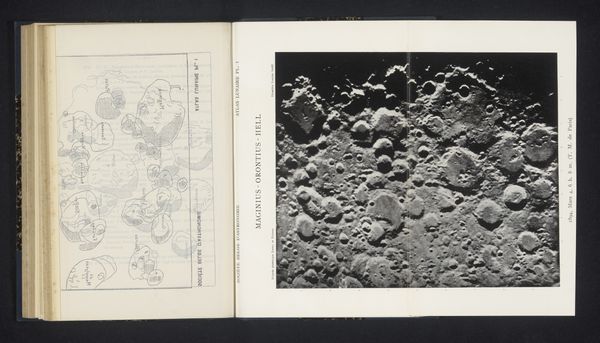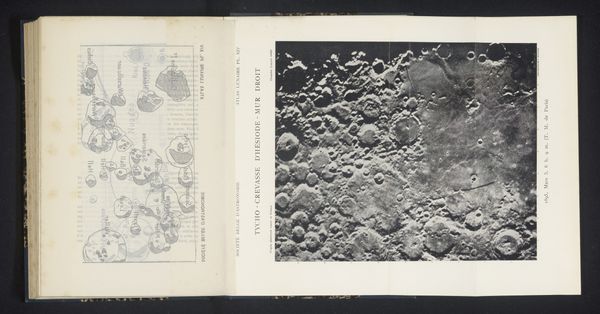
print, photography
# print
#
landscape
#
photography
#
geometric
#
modernism
Dimensions: height 183 mm, width 138 mm
Copyright: Rijks Museum: Open Domain
Curator: What strikes me immediately about this photographic print is how tactile it feels. It's like I can run my fingers over the moon's surface, feeling every crater and valley. Editor: And you almost could! This is a photographic print, from before 1873, entitled 'Gipsmodel van de maankrater Walther, van bovenaf gezien', which translates to 'Plaster model of the lunar crater Walther, seen from above.' It's currently held here at the Rijksmuseum. The artist is James Nasmyth. Curator: A plaster model! That explains the tangible quality I sensed. So, Nasmyth didn't photograph the moon directly? Editor: Not exactly. Nasmyth meticulously crafted a three-dimensional model of the lunar landscape, and *then* he photographed it. This was a popular approach at the time, given the limitations of early astronomical photography. This print comes from his book *The Moon: Considered as a Planet, a World, and a Satellite.* Curator: So, in a way, it’s an image of an illusion, meticulously constructed. The result is captivating! It evokes both the cold, distant reality of space and the intimate feeling of handling a miniature world. Editor: Indeed. Nasmyth wasn't just aiming for scientific accuracy, though he valued that. His images are also steeped in the visual language of Romantic landscape painting. He sought to create a sublime, almost spiritual experience for the viewer. The starkness of the moon softened. Curator: And that touches on what's also great, its modernist appeal! The strict geometric design formed of a gray field populated with circles upon circles makes the image appear strikingly avant-garde in ways the artist likely didn't foresee! Editor: Absolutely. Think about the impact this had. Nasmyth made the Moon "knowable" to a vast public. The industrial revolution influenced even our artistic visualizations of space. It created a popular aesthetic based on lunar observation. Curator: Looking at this image makes me ponder human ambition, in reaching out beyond our planet but I keep returning to its artistic expression. Editor: Right. Nasmyth took the objective, scientific data, and made something beautiful, thus sparking scientific, social and visual exploration for future generations.
Comments
No comments
Be the first to comment and join the conversation on the ultimate creative platform.
